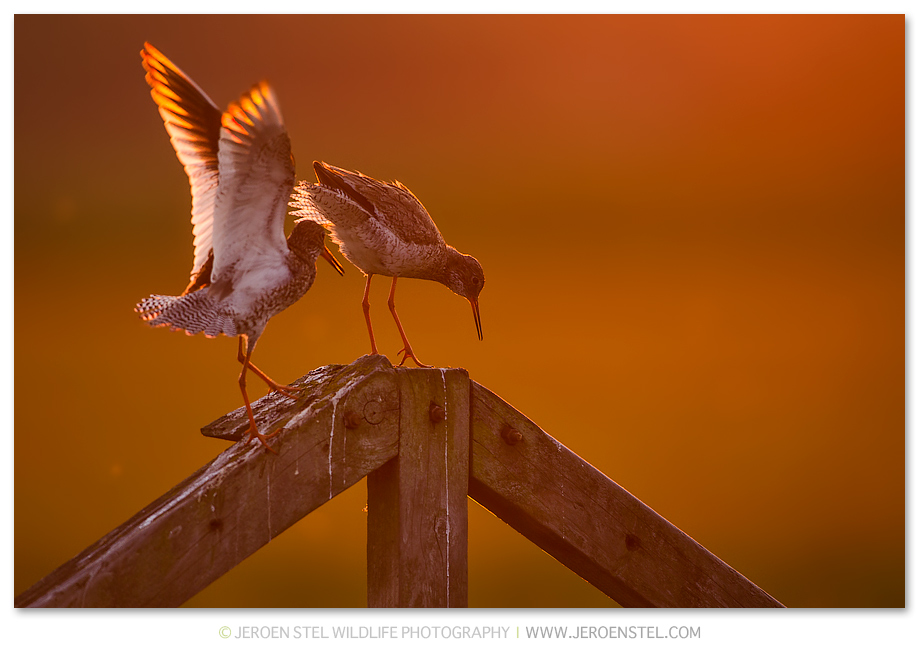The last 5 minutes of the day must be the best when it comes down to using light for photography. Paying more attention to light is perhaps the single most important step you can take to improve your photography. With many wildlife subjects, having good natural lighting can even be more important than the choice of subject itself. Different types of natural light can also produce a wide variety of subject appearances, even though these all have the same light source. Learn how to achieve the right light for your subject by utilizing the unique qualities of your particular time of day and weather.
Three factors influence how natural light renders a subject: time of day, camera direction and weather.The first and last minutes of the day produce a beautiful red glow also known to photographers as “red-5”. My favorite light to photograph wildlife in as it offers opportunity for high key, regular and silhouet photography. Further from high noon, the sun dips closer to the horizon. This results in lower contrast, because sunlight has to pass through more atmosphere, and more easily bounces off the ground toward the subject. In addition, the atmosphere selectively filters more of the sun’s blue light thus resulting in warmer light overall. The hour just before sunset and just after sunrise (the “golden hour”) is typically regarded as having the most desirable light for photography. This is characterized by horizontal light that casts long shadows and gives subjects a warm glow.
Sunsets and sunrises make for exciting and highly varied lighting, primarily because these are heavily influenced by subtleties in the weather. Clouds are rendered using sunlight which reflects off them from underneath as opposed to sunlight which has diffused through them from above, potentially causing the sky to light up with a soft, warm light. Although sunsets and sunrises are in theory identical, weather patterns can cause these to be consistently different, so many photographers prefer one over the other. Some find that they’re more prepared to photograph during sunset over sunrise, because light quality builds steadily prior to a sunset whereas with sunrises, the light often starts at its best and gradually fades. In addition, being awake and on-location for a sunrise is often impractical in the summer months. On the other hand, sunrise photography is usually void of potentially distracting crowds, and more often has a low-laying mist and dew on foliage. Sunrises often also have a calm, quiescent quality particularly with scenes involving water that isn’t present during sunsets.
Wichever you prefer does not matter that much. It is the quality of the light and the warmth of the color tones wich make these times of the day stand out in every way.



































